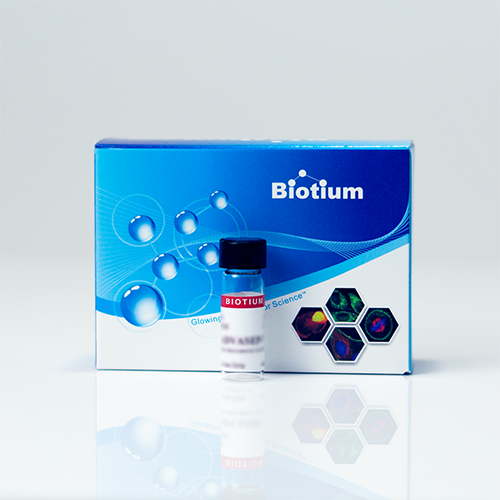Biotin-X cadaverine, trifluoroacetate salt
Biotin-X cadaverine trifluoroacetic acid salt (5-(((N-(biotinoyl)amino)hexanoyl)amino) pentylamine, trifluoroacetic acid salt) can be coupled to activated carboxylic acid esters or sulfonyl chlorides in the presence of a base or in a basic buffer. Also see biotin-X cadaverine free base (90080).
Wishlist updated! View wishlist
Product Description
Biotin-X cadaverine trifluoroacetic acid salt (5-(((N-(biotinoyl)amino)hexanoyl)amino) pentylamine, trifluoroacetic acid salt) can be coupled to activated carboxylic acid esters or sulfonyl chlorides in the presence of a base or in a basic buffer. Also see biotin-X cadaverine free base (90080).
- Tan solid soluble in DMSO
- Store at -20°C or 4°C
- C23H40F3N5O5S
- MW: 555.65
References
1. J Histochem Cytochem 38, 377 (1990).
2. Ann NY Acad Sci 463, 214 (1984).
3. Biochem J 251, 935 (1988).
|
1. J Histochem Cytochem 38, 377 (1990).
2. Ann NY Acad Sci 463, 214 (1984).
3. Biochem J 251,935 (1988).


